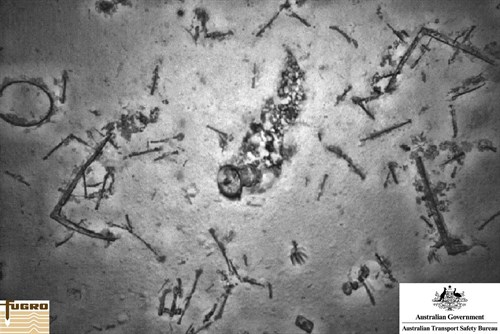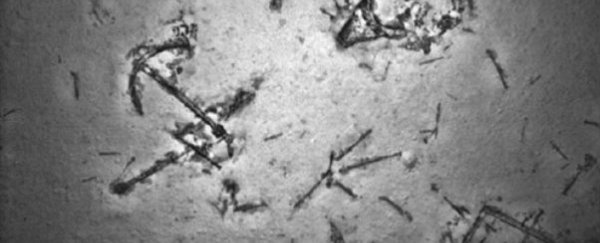Australian and Dutch vessels searching for the missing Malaysia Airlines flight MH370 have discovered a previously uncharted shipwreck in the Indian Ocean.
The mysterious flight MH370 vanished last year while travelling from Kuala Lumpur to Beijing with 239 people on board.
Search teams have focussed their efforts on a 60,000-square-km (23,000-square-mile) area off the coast of Western Australia, where experts believe the plane might have gone down. But so far, there has been no trace of any wreckage.
Now, the search has yielded a different, unexpected wreck. An underwater search vehicle being towed by one of several ships recently detected bright reflections from a cluster of unknown objects. These were located at a depth of 3,900 metres, about 1,000 kilometres from the west Australian coastline.
"We were cautious about this," director of the MH370 search Peter Foley, from the Australian Transport Safety Bureau (ATSB), said in a release.
"There were characteristics of the contact that made it unlikely to be MH370, but there were also aspects that generated interest, multiple small bright reflections in a relatively small area of otherwise featureless seabed."
 Ship-related debris on the sea floor near West Australia Credit: ATSB/Fugro
Ship-related debris on the sea floor near West Australia Credit: ATSB/Fugro
Sonar data acquired by the search vessels undergo a rigorous analysis. First, they are examined by the mission crew on board the vessels, before being transmitted and reviewed by Dutch sonar analysts based in Perth, Australia. They are then analysed a second time by sonar experts in the ATSB search team.
"The process is methodical, meticulous and it is designed to ensure that nothing is missed," said Foley. "In this case we planned to resurvey the contact in more detail when the opportunity arose."
A ship owned by Dutch company Fugro, which has been contracted to help locate the missing plane, was diverted from the search to investigate further, on the off chance that the objects were linked to the mysterious flight.
An automated underwater vehicle (AUV) was deployed, which performed a high-resolution sonar scan of the area. This showed that the majority of the objects were relatively small - about the size of a baseball - with a few larger objects interspersed.
The search team concluded that the debris appeared to be man-made, but was unlikely part of an aircraft. Another lower-altitude mission was undertaken by the AUV, using a camera to gather images.
As Nicky Phillips reports for The Sydney Morning Herald, the images were analysed this week and "reveal several man-made objects including an anchor, and a box-shaped object about six metres long…[while] black rocks scattered across the seabed are thought to be coal."
Michael McCarthy, a senior maritime archaeologist at the West Australian Maritime Museum, said it was the wreck is of a 19th Century cargo ship.
"We've got quite a lot of stories about ships that sank in the Indian Ocean mid-voyage and you would be struggling to tell which is which unless you had a complete catalogue of all the ones lost," he told the Associated Press.
And while Foley says it's a "fascinating find", he's also made it clear that it won't distract from the main objective of location MH370, and added that all ships have already moved on and continued the search.
"Obviously, we're disappointed that it wasn't the aircraft, but we were always realistic about the likelihood. And this event has really demonstrated that the systems, people and the equipment involved in the search are working well. It's shown that if there's a debris field in the search area, we'll find it."
